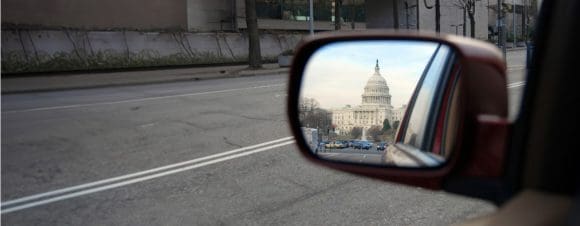Latest updates
Market insights
Regional implications
Featured videos
UBS Road to the Election
In this series, we sit down with research analysts and political experts to examine key election topics. Tune in for new episodes on Thursdays at 4:30 p.m. ET.
This video series has concluded
This video series has concluded
While there will be no new episodes of UBS Road to the Election, we encourage you to explore previous episodes you might have missed and to check out a new 3-part video series, Race to the White House, below. Please visit ubs.com/electionwatch through and after Election Day for continued coverage.

The bottom line
In its final days, the US presidential race couldn’t be tighter. Kurt Reiman, Head of Fixed Income, CIO Americas, advises worried investors not to vote with their portfolios, and shares tactical ways to prepare for potential volatility.

China, trade, and the economy
If elected, how would Trump or Harris handle relations with China, including trade and tariffs? Robert Daly, Director of the Kissinger Institute on China and the US, says that, while their approaches would differ, preserving peace should be at the center.
Race to the White House

Too close to call
November fifth is around the corner. After an eventful campaign, voters are casting early ballots, ad spending is running hot, financial pledges are coming in thick and fast and the political campaigns are becoming increasingly confrontational. In this first episode of our 3-part US Election Special, Jon Gordon, CIO Investment Strategist, sits down with Shane Lieberman, Senior Governmental Affairs Advisor at UBS Public Policy Office, to provide an update on what’s shaping up to be an exceptionally tight race.

Impact on foreign policy
The US election has global implications. It'll also impact America's role in global institutions and on the world stage. In the second episode of our 3-part US Election Special, Jon Gordon, CIO Investment Strategist, sits down with Oriana Skylar, Geopolitical Strategist, Assistant Professor of Political Science, Stanford University & Author of Upstart: How China became a Great Power to discuss how will the US election impact foreign policy.

Trump vs. Harris: Portfolio winners & losers
What will the results of November mean for you and your portfolio? And what steps should be taking right now to get ahead? In the last episode of our 3-part US Election Special, Jon Gordon, CIO Investment Strategist, speaks with Solita Marcelli, Chief Investment Officer Americas, to discuss portfolio winners & losers in a Trump vs. Harris showdown.





























